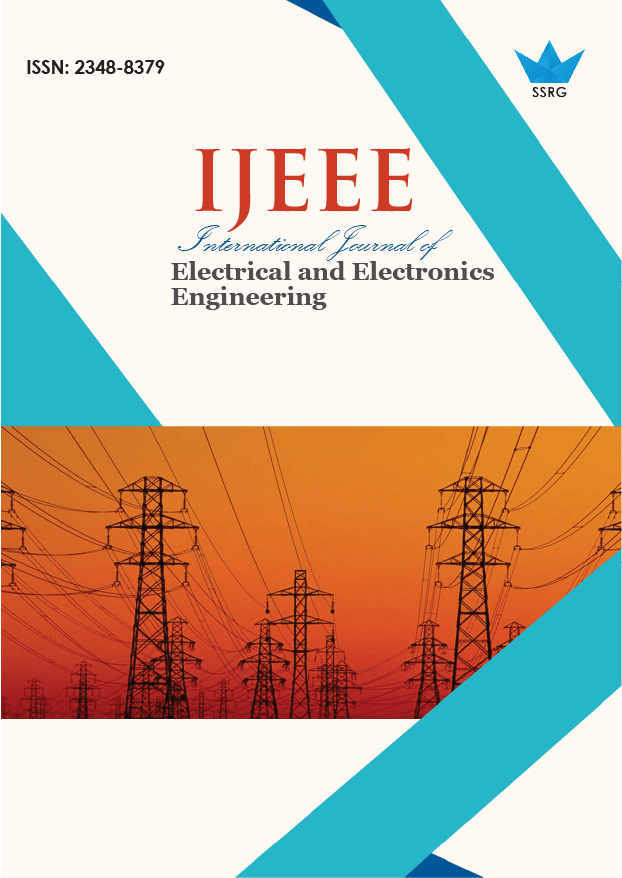Smart Home and Multimedia Panels Design Interface in Sundanese Indonesian Traditional Houses

| International Journal of Electrical and Electronics Engineering |
| © 2025 by SSRG - IJEEE Journal |
| Volume 12 Issue 3 |
| Year of Publication : 2025 |
| Authors : Marvin Chandra Wijaya |
How to Cite?
Marvin Chandra Wijaya, "Smart Home and Multimedia Panels Design Interface in Sundanese Indonesian Traditional Houses," SSRG International Journal of Electrical and Electronics Engineering, vol. 12, no. 3, pp. 137-144, 2025. Crossref, https://doi.org/10.14445/23488379/IJEEE-V12I3P114
Abstract:
Installing a smart home system into a conventional home would prove practical and aesthetically compatible, as well as blending modern technology into the architecture and cultural setting of the conventional house. The Sundanese traditional house, or "Rumah Adat Sunda," is an important architectural feature for the Sundanese people, who make up the largest ethnic group in West Java, Indonesia. The design of the Sundanese traditional house conveys the values of Sundanese society, its way of living and environmental adaptation. The smart house was constructed with a single living room, two bedrooms, a kitchen, and one bathroom. This design study aimed to create a functioning system. All experiments were successful in the designing of the energy-consumption greenhouse. Saving on electricity in smart houses was estimated to be 18.75%.
Keywords:
Multimedia, Panels design, Smart home, Sundanese, Interface.
References:
[1] N. Abdul Latip et al., “Identification of Timber Material Defect Using VIA on Selected Traditional Malay House: Case Study on Tuan Hj Hashim Itam (Kerani) Historical House at Penang, Malaysia,” 2nd International Conference on Materials Engineering & Science, Baghdad, Iraq , vol. 2213, no. 1, 2020.
[CrossRef] [Google Scholar] [Publisher Link]
[2] Husam R. Husain, and Omar Salem, “The Role of Tactical-Ism and Community Engagement in Shaping Decent Neighbourhoods: Cairo Case Study,” New Design Ideas, vol. 8, no. Special Issue, pp. 106-130, 2024.
[CrossRef] [Google Scholar] [Publisher Link]
[3] Siti Halipah Ibrahim, “Reinventing Traditional Malay House for Sustainable Housing Design: Obstacle and Solution,” Technology Journal, vol. 72, no. 1, pp. 97-102, 2015.
[CrossRef] [Google Scholar] [Publisher Link]
[4] Shi Linfeng, Yang Wanyi, and Norsidah Ujang, “A Systematic Literature Review of Place Attachment in Environments, Cities and Landscapes,” New Design Ideas, vol. 8, no. 2, pp. 389-411, 2024.
[CrossRef] [Google Scholar] [Publisher Link]
[5] Dina Fatimah, “Implementation Overview of Minangkabau Society’s life Philosophy on the Custom House Interior Plan,” Proceedings of the International Conference on Business, Economic, Social Science and Humanities, pp. 147-151, 2018.
[CrossRef] [Google Scholar] [Publisher Link]
[6] Purnama Salura, Stephanie Clarissa, and Reginaldo Christophori Lake, “The Application of Sundanese Vernacular Concept to The Design of Modern Building-Case Study: Aula Barat (West Hall) of Bandung Institute of Technology, West Java, Indonesia,” Journal of Design and Built Environment, vol. 20, no. 1, pp. 1-12, 2020.
[CrossRef] [Google Scholar] [Publisher Link]
[7] Zhang Jingling, “A Study on the Change of Functions of Kinari Village’s Rumah Gadang,” Andalas International Journal of Socio Humanities, vol. 1, no. 1, pp. 18-24, 2019.
[Google Scholar] [Publisher Link]
[8] Witold Brostow, Madhuri Dutta, and Piotr Rusek, “Modified Epoxy Coatings on Mild Steel: Tribology and Surface Energy,” European Polymer Journal, vol. 46, no. 11, pp. 2181-2189, 2010.
[CrossRef] [Google Scholar] [Publisher Link]
[9] Bhavna Sharma et al., “Engineered Bamboo for Structural Applications,” Construction and Building Materials, vol. 81, pp. 66-73, 2015.
[CrossRef] [Google Scholar] [Publisher Link]
[10] Michele Paradiso et al., “Usage of Bamboo Powder as an Additive in Adobe Bricks and Bamboo Canes Frame for the Reinforcement of Adobe Structure,” M Magazine, vol. 15, pp. 70-79, 2019.
[Google Scholar]
[11] J. Maknun, T. Busono, and Nuryanto, “Disaster-Friendly Sundanese Traditional Building Construction,” IOP Conference Series: Materials Science and Engineering, International Conference on Innovation in Engineering and Vocational Education, Bandung, Indonesia, vol. 128, no. 1, pp. 1-9, 2016.
[CrossRef] [Google Scholar] [Publisher Link]
[12] Rolando-Arturo Cubillos-González et al., “Design of Resilient Affordable Housing Prototypes for Latin American Cities,” New Design Ideas, vol. 8, no. 2, pp. 300-312, 2024.
[CrossRef] [Google Scholar] [Publisher Link]
[13] Haley M. Gardner et al., “Whole Building Life Cycle Assessment of a Living Building,” Journal of Architectural Engineering, vol. 26, no. 4, 2020.
[CrossRef] [Google Scholar] [Publisher Link]
[14] Yong Han Ahn et al., “The Greening of Affordable Housing Through Public and Private Partnerships: Development of a Model for Green Affordable Housing,” Journal of Green Building, vol. 9, no. 1, pp. 93-112, 2014.
[CrossRef] [Google Scholar] [Publisher Link]
[15] C.K. Chau et al., “Evaluation of the Impacts of End-Of-Life Management Strategies for Deconstruction of a High-Rise Concrete Framed Office Building,” Applied Energy, vol. 185, no. 2, pp. 1595-1603, 2016.
[CrossRef] [Google Scholar] [Publisher Link]
[16] Vaclav Hasik et al., “Comparative Whole Building Life Cycle Assessment of Renovation and New Construction,” Building and Environment, vol. 161, no. 10, 2019.
[CrossRef] [Google Scholar] [Publisher Link]
[17] Ameer Hamza Y, and Shravankumar Venumula, “Implementation of the Control System for Energy-Efficient Electrical Devices on IoT,” International Innovative Research Journal of Engineering and Technology, vol. 9, no. 2, pp. 1-8, 2023.
[CrossRef] [Google Scholar] [Publisher Link]

 10.14445/23488379/IJEEE-V12I3P114
10.14445/23488379/IJEEE-V12I3P114